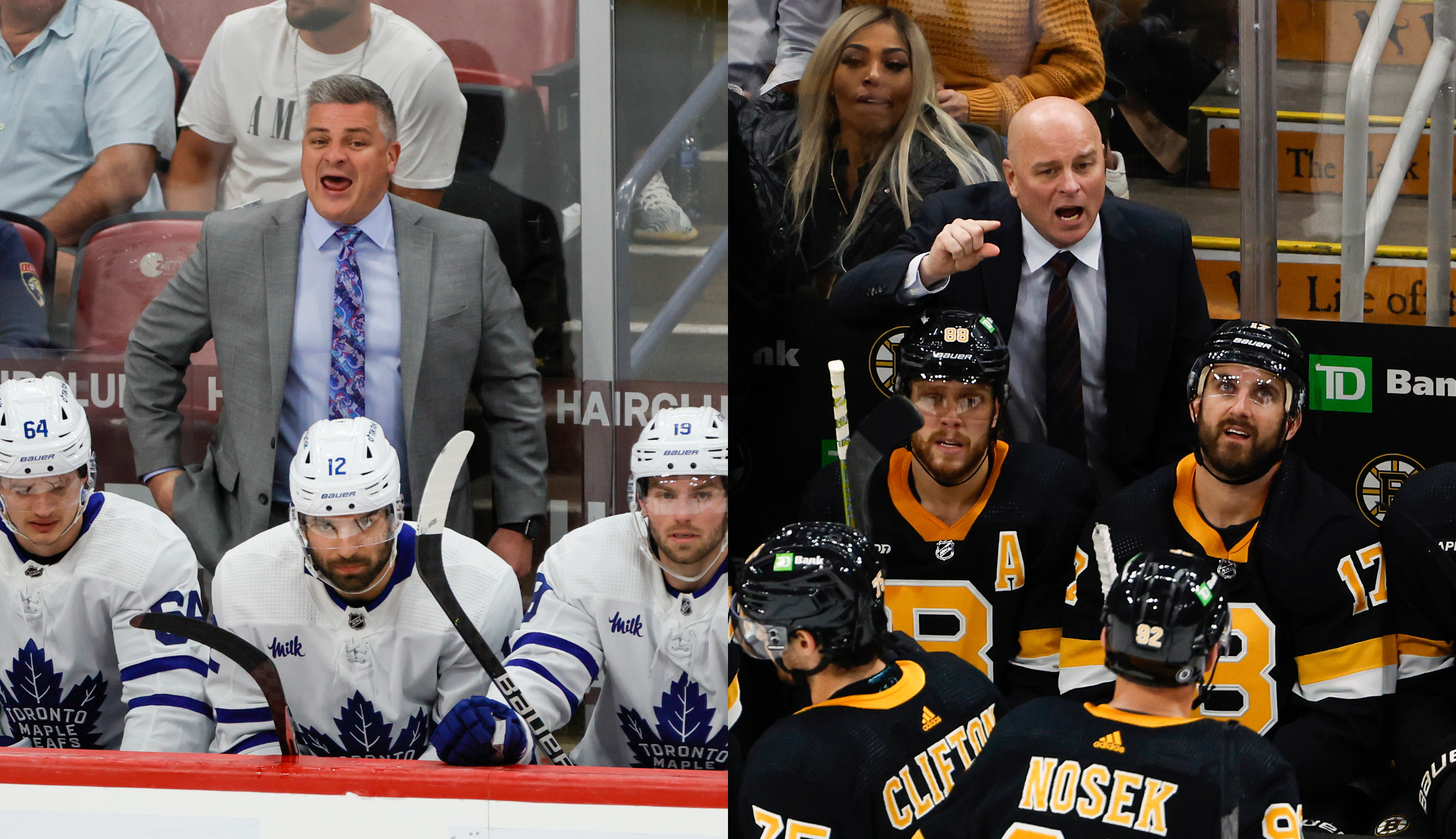Frederik Andersen’s reemergence as an elite goaltender and its impact on the Leafs

It’s no secret that Frederik Andersen’s last 18 or so months in a Leafs uniform have been suboptimal. Beyond the off-ice instability of a still ongoing pandemic that has the NHL scrambling for solutions, Frederik Andersen’s on-ice performance has similarly been unstable at best, and downright pitiful at worst. Outside of a brief November surge early in the ‘19-’20 campaign, Andersen’s save percentage has steadily been on the decline over the past two seasons, accentuated at one point this year by an early season .888 save percentage through his first nine games. As the calendar has turned from January to February, however, and following a somewhat typical “October Freddy” appearance in January, something seems to have clicked for Andersen. It is beginning to look like Frederik Andersen of old may be poking out his head after a long hibernation.
When Jack Campbell went down with an apparent leg injury, you would have been well within your rights to express concern about the Maple Leafs goaltending situation. In the blink of an eye, a group that was four goaltenders deep had evaporated, with Aaron Dell’s poaching by the New Jersey Devils coming less than a week prior. Andersen’s workload, something the Maple Leafs had reportedly been very adamant on trying to limit, was now going to increase exponentially, barring the team turning to Michael Hutchison, one of the weakest goaltenders in all of hockey during the 2019-20 season.
Calling upon Andersen
The beginning of the post-Campbell stretch saw the Maple Leafs in the midst of their Alberta road trip facing the Calgary Flames in the second game of their mini-series. While the Maple Leafs were able to walk out of the Scotiabank Saddledome with two points on the back of a 4-3 win, Andersen by no means stole the game, sporting a .885 sv% for the evening. The story was much the same as the Maple Leafs headed north to face Connor McDavid’s Edmonton Oilers. Andersen allowed 7 goals over the two games and again looked rather pedestrian, struggling to stay square to pucks, as seen on Zach Kassian and Dominik Kahun’s goals in the first and second games respectively. Note the dramatic lunges forward while already down in the butterfly as Andersen is beaten top shelf on both.
Over the two games, Andersen’s save percentage again looked rather human, as he failed to crack .900 in either game. Finally, even amidst a 7-3 drubbing of the Vancouver Canucks, Andersen once again struggled when challenged. Freddy sported his second-worst single-game save percentage of the season that night with an .842 save percentage, allowing three goals 19 shots, with just a single expected goal against per NaturalStatTrick’s expected goals model. Despite the fact that the Maple Leafs were winning games, all did not appear well between the pipes, and it appeared only a matter of time before the consequence of their poor goaltending would come back to bite them.
All of the sudden, however, it seemed that Frederik Andersen found his groove. In game two of the mini-series against the Canucks, Andersen looked like a totally different goalie. Allowing only one goal against, Andersen was stellar. While he was not forced to make any game-changing stops, Andersen was there when the Maple Leafs needed him to be, tracking pucks well and keeping the Canucks at bay almost the entire game, save for a Bo Horvat tip on the powerplay with just over two minutes left in the game. Check out Andersen’s unwillingness to overcommit on this third period opportunity for the Canucks. He clearly looks dialled in.
Frederik Andersen followed up his stellar performance two nights later with perhaps his best game of the season. The Canucks were far more dangerous in the finale of the three game series, even outdoing the Maple Leafs by expected goals and scoring chances. Andersen was a huge reason, however, that the Maple Leafs were able to grab two points in an eventual 3-1 win. Even while getting outshot early, Andersen kept the Maple Leafs in the game. A huge breakaway stop on Justin Bailey at the tail end of the first period truly set the tone, as Andersen would allow just one goal once again en route to his single-game high in save percentage at .969, stopping 31 out of 32 pucks sent his way.
Finally, there’s Andersen’s performance against the Montreal Canadiens. Billed as the test of the North Division titans, the Habs would be a much tougher foe than the lowly Vancouver Canucks. Once again, Andersen answered the bell in resounding fashion. Despite a horrific first goal against to start the game, Andersen was once again steady, even as the Maple Leafs were outdone by both Corsi for and Expected Goals percentage at 5v5. Passing the test with flying colours, Frederik Andersen was again locked in, and only further presented his case as a changed man with the turn of the calendar from January to February. The win against the Canadiens pushed the Maple Leafs a full five points beyond the Canadiens for first in the division, and major props are in order for Frederik Andersen’s contribution to this.
The numbers back up the eye test
Beyond the on-ice visuals of Andersen’s stellar play that we’ve looked at thus far, a deeper dive into how great Frederik Andersen has been for this hockey club is in order. By every available metric, Andersen has been amongst the league’s best as we approach the quarter-mile mark of the regular season. According to TopDownHockey, Frederik Andersen ranks third in the entire National Hockey League in goals saved above expected, trailing only Andrei Vasilevsky of Tampa Bay and Cal Peterson of Los Angeles. In terms of save percentage on all pucks directed at him at even strength, Andersen ranks eighth by that metric, clearly putting him in the top tier of goalies this season across the league. Moneypuck’s goaltending model similarly speaks well of Frederik Andersen, ranking him second league-wide in save percentage above expected, this time only behind Vasilevsky.
So, what is behind this change in Andersen’s game? In short, Frederik Andersen is stopping pucks more in tight at even strength (ES). His ES high danger save percentage ranks seventh in the league at .849%, which would be the high watermark of his time in Toronto if he kept that up. In fact, the only reason that Andersen’s overall save percentage on the season isn’t higher is because of his putrid .796 sv% while on the penalty kill, which hasn’t been helped by a rather pedestrian unit as a whole. In terms of the sustainability of Freddy’s even-strength numbers, however, there may be some questions on it given that it is 44 points higher than his ES high danger sv% from 2020. Fans shouldn’t hit the panic button though, as Andersen has shown in the past that he’s capable of these types of numbers. In his first season with the team in ‘16-’17, Andersen had an .845 HDsv%, which perhaps lends some credence to the fact Andersen has this type of play within himself. Combine this with the added volatility that comes from a shortened season, and it isn’t out of the question that Andersen continues his strong play well into the deepest parts of the regular season.
Creating Flexibility
Beyond Frederik Andersen’s play helping the team win games, his play of late also lends the Maple Leafs some flexibility as they begin to approach the portion of the season where trades can start to come together. As has already been well documented, the Maple Leafs plan to add a forward that can play in their top six by the trade deadline, which is two months from now on April 12th. Even the most competitive of teams with strong underlying numbers can be sunk by poor goaltending and, as the last line of defence, Frederik Andersen has remained rock solid. His play will allow the Maple Leafs to divest assets away from acquiring goaltending, even with their depth at the position quickly thinning, and towards making plays for others that can help them in different areas. Perhaps the Maple Leafs can draw from their increasingly impressive stable of young defencemen and acquire a guy like Rickard Rakell or Bobby Ryan, or maybe even a bigger fish like Taylor Hall. That simply would not be possible if the stability was not there in net.
Andersen’s resurgence this season really speaks to what this team is capable of going forward. As the top-end players continue to produce, and the defence remains as steady as they can be, especially against the cream of the crop like the Montreal Canadiens, Andersen’s play only further reinforces that the sky’s the limit for this hockey club. It’s too early to say how far they’ll be going, but one thing is for certain: Frederik Andersen will be a significant part of whatever it is the Maple Leafs do accomplish this spring.
All Stats via Hockey Reference unless otherwise noted.
Recent articles from Jori Negin-Shecter





